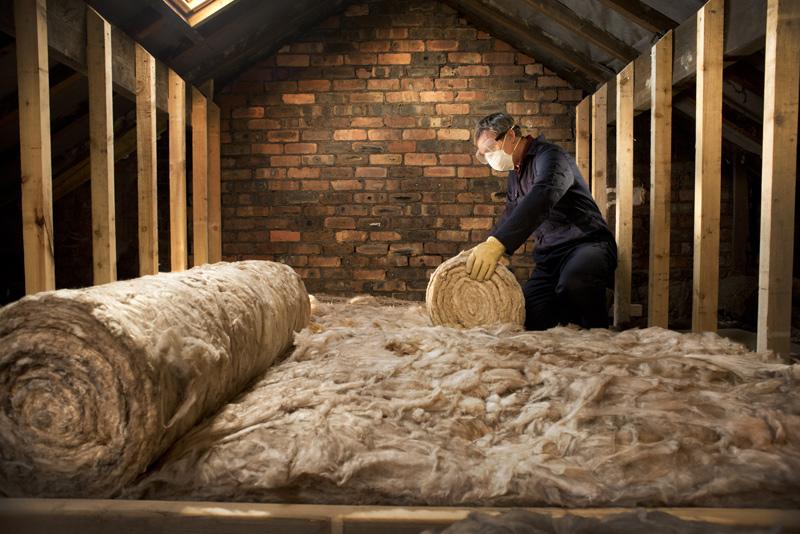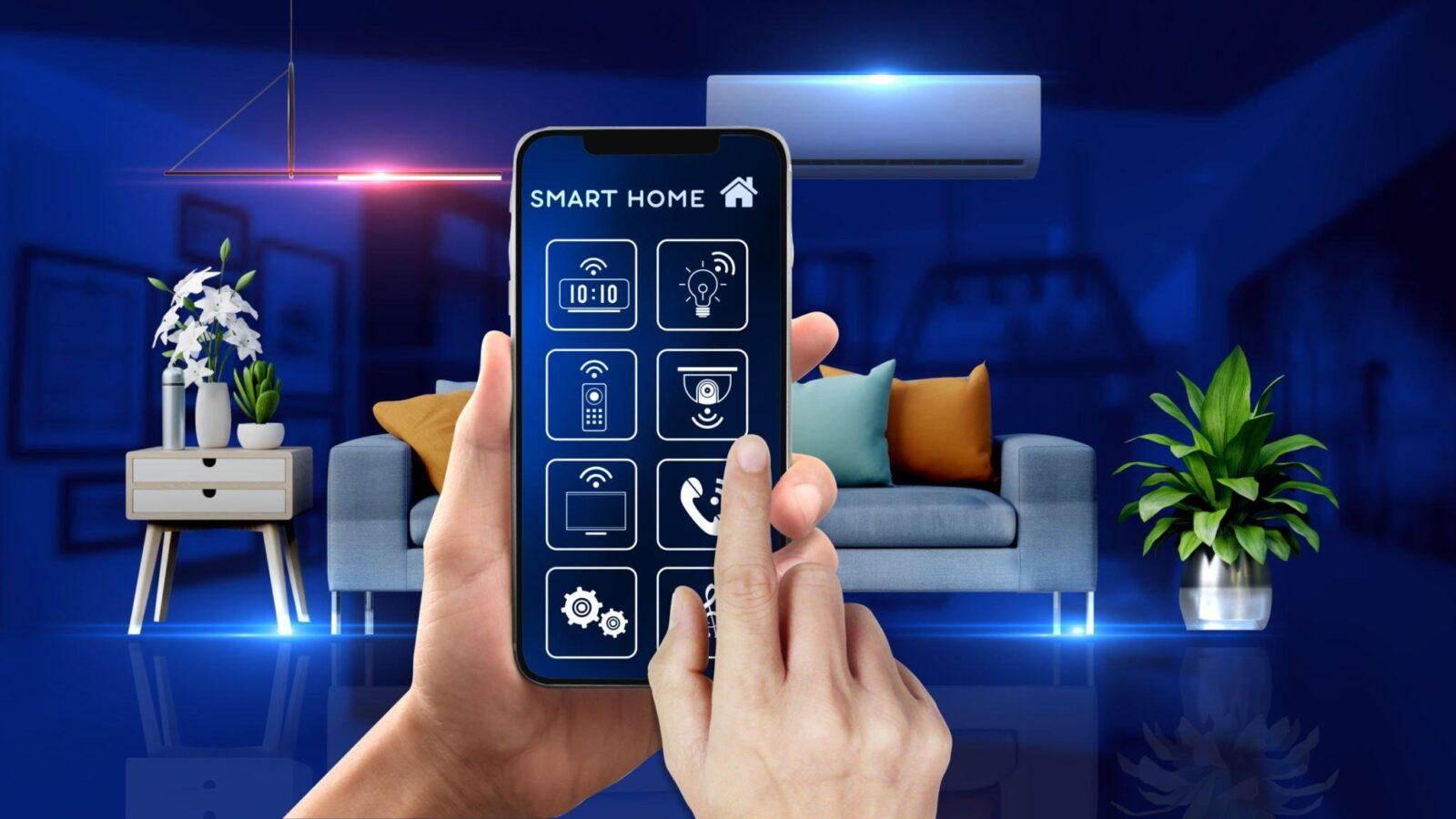In an era where sustainability and technology converge, the home has transformed into a canvas for innovation, blending comfort with eco-consciousness. “Green & Smart: Energy-Saving Home Automation Tips” invites you to explore the myriad possibilities of creating an efficient and environmentally friendly living space. As the demand for energy-efficient solutions continues to rise,smart home technology presents an unparalleled opportunity to reduce consumption while enhancing our daily lives. This article will unveil practical tips and strategies for integrating automation into your home, empowering you to make a tangible impact on both your energy bills and the planet. Join us on this journey toward a greener future, where every small step can lead to significant change.
Harnessing the Power of Smart Thermostats for Optimal Energy Efficiency
Smart thermostats are revolutionizing the way we manage our home heating and cooling systems. By learning your daily routines and preferences, these devices optimize temperature control based on real-time data. This not only ensures comfort but significantly cuts down on energy waste. With features like geofencing, a smart thermostat can detect when you’re away from home and adjust settings accordingly, preventing unneeded energy consumption.
Another remarkable characteristic of smart thermostats is their ability to provide insightful analytics about your energy usage. By utilizing a user-friendly app, you can access past data and receive actionable suggestions to improve your home efficiency.Some models even offer energy-saving reports that highlight peak usage times, allowing you to adjust behaviors strategically. Consider the following features to enhance your energy savings:
- Remote Access: Control your thermostat from anywhere using your smartphone.
- Integrations: Sync with other smart home devices for automated energy management.
- Alerts and Notifications: Get reminders to replace filters or to take advantage of energy-saving settings.
| Feature | Benefit |
|---|---|
| Adaptive Learning | Automatically adjusts settings based on your habits. |
| Energy Reports | Identifies trends to help you save more. |
| Smart Alerts | Notifies you of efficiency opportunities. |
implementing a smart thermostat can lead to significant savings on energy bills over time. It’s a small investment for the long-term gains of a more efficient home. By embracing this technology,you’re not only enhancing your living environment but also contributing to a greener planet through reduced energy consumption. The world of smart home automation awaits, inviting you to make thoughtful choices that benefit both your wallet and the environment.

Illuminating Choices: The Benefits of LED Lighting and Smart Controls
LED lighting has revolutionized the way we illuminate our homes, offering a spectrum of benefits that not only enhance the aesthetic appeal but also promote sustainability. Unlike conventional incandescent bulbs, LEDs are energy-efficient, consuming up to 80% less energy while providing the same brightness.This remarkable efficiency leads to significantly lower electricity bills, allowing homeowners to allocate their budget more intelligently. Furthermore, LEDs have a substantially longer lifespan, often lasting 25,000 hours or more, which reduces the frequency of replacements and contributes to less waste in landfills.
Incorporating smart controls into your lighting system amplifies these advantages by adding responsiveness and adaptability. With features such as remote access,scheduling,and occupancy sensors,homeowners can effortlessly manage their lighting based on their routines and preferences. Imagine returning home to a well-lit space after a long day, all thanks to automatically programmed settings that adjust based on sunset times or occupancy. Smart lighting systems also allow for the creation of personalized ambiance, utilizing color-changing capabilities that cater to any occasion or mood.
| Feature | Benefits |
|---|---|
| Energy Efficiency | Reduce electricity bills by up to 80% |
| Longevity | Last up to 25,000 hours or more |
| Smart Controls | remote access and scheduling flexibility |
| Customization | Create personalized lighting experiences |
In sum, the integration of LED lighting and smart controls represents a pivotal step towards an eco-conscious and modern home. Homeowners can enjoy an enhanced living environment while playing an active role in energy conservation. By making informed choices regarding illumination, individuals not only invest in their comfort but also contribute to a greener planet.

Automating Your Home: Effective Tips for Energy-Saving Appliances
Integrating energy-saving appliances into your home automation system can greatly reduce your energy consumption while enhancing convenience. Consider upgrading to smart thermostats that learn your lifestyle patterns and adjust heating and cooling accordingly. This ensures that your home is pleasant when you are there and saves energy when you’re not. Furthermore, by setting schedules or using geofencing technology, you can optimize your energy use even when you are away from home.
Another powerful addition to your smart home ecosystem is smart lighting. These systems enable you to customize your lighting preferences and schedule lights to turn off automatically when not in use. Not only do they help in energy conservation, but they also add an element of security by giving the illusion that someone is home when you are away. Moreover, you can use dimmers, motion sensors, and timers to further enhance energy efficiency and create the perfect ambiance in each room.
Lastly, consider integrating smart appliances such as refrigerators, ovens, and washing machines that are designed for energy efficiency. Many modern appliances feature energy monitoring that allows you to track their power consumption in real time, helping you identify areas to improve efficiency. below is a simple comparison of standard appliances versus their smart, energy-saving counterparts:
| Appliance Type | Standard Model Energy Use (kWh/year) | Smart Model Energy Use (kWh/year) | Potential Savings (%) |
|---|---|---|---|
| Refrigerator | 600 | 450 | 25% |
| Washing Machine | 500 | 350 | 30% |
| Oven | 300 | 200 | 33% |

Enhancing Home insulation: Smart Solutions for a Greener Living Space
To create a greener living space, investing in smart home technologies can significantly enhance your home’s insulation capabilities. Smart thermostats not only optimize heating and cooling schedules based on your lifestyle but also learn from your behaviors to suggest ideal settings. This means your heating system will work efficiently, decreasing energy consumption while maintaining comfort levels throughout your home.
Incorporating smart window treatments can further complement your insulation efforts. Automated blinds and shades can adjust throughout the day in response to sunlight and temperature changes, reducing heat gain in the summer and retaining warmth in the winter. This dynamic control helps to minimize reliance on heating and cooling systems,leading to lower energy bills and a reduced carbon footprint.
Moreover, leveraging energy monitoring systems can provide valuable insights into your home’s energy usage.By identifying areas that require better insulation, these systems allow you to focus your efforts where they matter most. This data-driven approach not only helps mitigate energy waste but can also inform decisions regarding upgrades, ensuring your investment aligns with your sustainability goals.
Q&A
Q&A: Green & Smart - Energy-Saving Home Automation Tips
Q1: What exactly is home automation, and how can it help save energy?
A1: Home automation involves using technology to control various household systems remotely or automatically, such as lighting, heating, and appliances. By optimizing their operation, home automation can significantly reduce energy consumption. As an example, smart thermostats learn your schedule, adjusting heating and cooling only when necessary, thus conserving energy and lowering bills.Q2: What are some simple automation tools that homeowners can start with?
A2: Some user-friendly tools include smart plugs, which can control connected devices, and smart bulbs, which allow you to schedule lighting.Smart thermostats are a must-have for efficient heating and cooling, while motion sensors can ensure that lights only activate when someone is present, conserving energy when rooms are unoccupied.
Q3: Are there specific areas in the home where automation can make a noticeable impact on energy savings?
A3: Absolutely! The biggest areas for impact are heating and cooling, lighting, and water usage. Such as, automating your thermostat to lower temperatures when you’re not home or using programmable irrigation systems for gardens can lead to substantial energy and water savings.
Q4: What role do smart home devices play in promoting renewable energy usage?
A4: Smart home devices can be integrated with renewable energy sources, like solar panels.They can optimize energy usage by prioritizing solar energy when it’s available, storing excess energy for later use, and even providing insights on when to use energy to take advantage of off-peak rates.This synergy promotes a sustainable energy cycle in your home.
Q5: how can energy consumption data help homeowners to be more energy-efficient?
A5: Many smart devices offer energy monitoring features that track usage patterns and provide insights into consumption. Homeowners can identify which devices consume the most energy and make informed decisions on when to use them or consider energy-efficient alternatives to minimize waste.
Q6: Are there any initial costs associated with implementing home automation for energy savings?
A6: There may be initial costs for purchasing smart devices, but they often pay for themselves over time through reduced energy bills. Plus, various incentives and rebates are available in many regions to help offset these initial expenses, making it easier for homeowners to invest in a sustainable future.
Q7: How do smart devices integrate with existing home systems?
A7: Most smart devices are designed to integrate easily with existing systems via Wi-Fi or bluetooth. Homeowners can connect devices to their smartphones or central hubs, allowing seamless dialog and control. With compatible systems, homeowners can create customized routines that align with their lifestyles while maximizing energy efficiency.
Q8: Is it necessary to have an advanced tech background to set up home automation systems?
A8: Not at all! Most consumer-friendly devices are designed for easy setup and use, frequently enough guided by apps that provide step-by-step instructions. With a little patience and basic tech skills, anyone can establish a smart home that runs more efficiently and sustainably.
Q9: What’s the first step a homeowner should take if they’re interested in energy-saving automation?
A9: The first step is to assess your current energy usage and identify specific areas where automation could be beneficial. Start small—choose one or two devices to automate, review their effectiveness, and gradually expand your system based on what works best for your home.
Q10: Where can homeowners find reliable information and support when choosing energy-saving home automation products?
A10: Homeowners can consult trusted home betterment websites, energy-focused blogs, and local energy providers’ resources for insights and recommendations. Online communities, forums, and reviews can also provide valuable feedback from real users to guide your purchasing decisions.
concluding Remarks
In a world increasingly driven by technology, the harmony between convenience and conservation has never been more attainable. By embracing energy-saving home automation tips, you’re not just investing in a smarter living space, but also paving the way for a sustainable future.From intuitive lighting systems to smart thermostats, each step taken towards a greener home is a step towards a collective commitment to our planet. As you integrate these solutions, remember that every small change contributes to a larger impact. So why not embark on this journey today? With a little creativity and foresight, your home can become a beacon of energy efficiency—proving that smart living doesn’t just mean comfort; it means caring for our environment as well. Thank you for exploring the possibilities with us, and here’s to a brighter, greener tomorrow.
